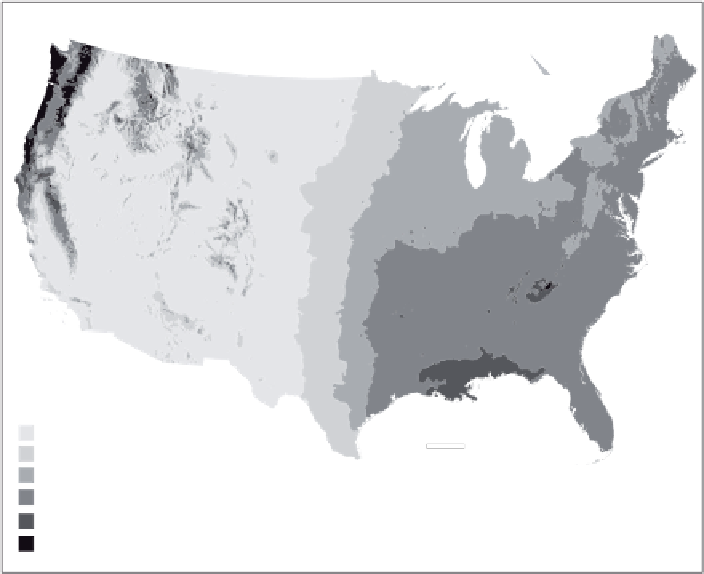Geography Reference
In-Depth Information
Normal Rain / Year
millimeters
0 -
500
0
50
0 km
500 -
750
750 - 1,000
1,000
-
1,500
1,500
-
2,000
Source: NOAA
Designed and made by JM Zaninetti, University of Orleans, CEDETE Institute
2,000
-
5,000
Figure 1.5.
Mean precipitation 1961-1990
Rainfall influences vegetation and agricultural potential (see Figure 1.5). Areas
situated east of the 100th meridian receive just enough water to support dryland
farming. The situation is different, however, west of the 100th meridian, with the
exception of the Pacific Northwest region where ocean rains and rocky terrains bring
above average precipitation rates.
Some mountains in the West are natural water towers as a result of heavy snows,
but the aridity is generally such that irrigation is required practice south of the 40th
parallel, and also in common used farther north.
The aridity increases moving south, where real deserts can be found. For
example, average rainfall is less than 80 mm per year in Yuma, Arizona. The
management of water resources is a major challenge for the American West.





















